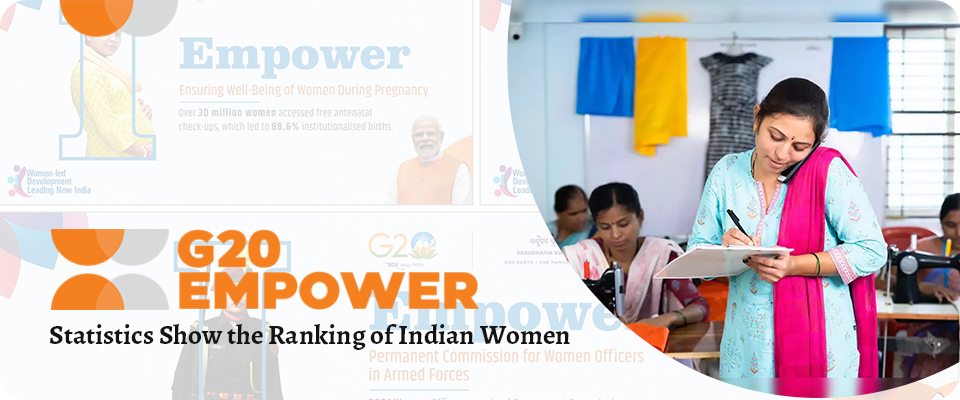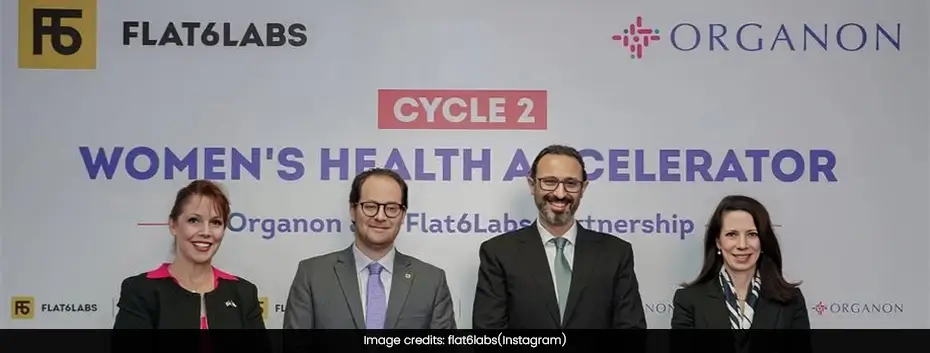![]() English
English
News
G20 EMPOWER: Statistics Show the Ranking of Indian Women

G20 EMPOWER has officially launched a Women’s Empowerment Working Group and the first meeting will be held in the Brazilian G20 Presidency. The aim and oath of this group is to commit to gender equality worldwide. Although the news of the establishment of this group is a good thing, the situation on the other hand regarding Indian women speaks a totally different story. Despite the remarkable efforts on a global level, the women of India still face restrictions in several sectors in matters of progress around several states in the country.
Status of Indian Women V/S Global Resolutions: A Clear-Cut Observation
The operational committee or group dedicated to supporting women and G20 Women’s Ministerial made a call to hold their first meeting during the Brazilian Presidency. Being the great news it is, the latest reports from India display a distinct contrast between global commitments and the reality of the actual situation in India. The study called, ‘Indian females in the twenty-first century: How they have fared’ speaks about the positioning of women’s empowerment in various Indian states, disclosing the regional imbalance.
The mentioned article was published in GeoJournal which is an international journal specializing in geographically united social science and humanities that incorporates geospatial techniques to inspect and examine socio-economic factors involving Indian women in the 21st Century.
According to the study, regardless of time and evolution, it said that the political representation of women in higher sectors stayed at the same level and never enhanced which is not satisfactory. Whereas, largely populated states such as Bihar, West Bengal, and Uttar Pradesh display a high number of women participation and involvement due to the increased number of allocated seats in Lok Sabha. On the contrary, the study even highlighted the upsetting statistics of the underperformance of Indian women in states such as Madhya Pradesh, Rajasthan, Bihar, and many others. Factors such as developmental issues, social and economic factors, and demographic parameters hinder the success and empowerment of women in such areas.
Coming to the Northeastern states, the study mentioned, which are generally free from some of the social issues that plagued the nation still struggle with issues like poverty, superstitions, armed conflicts, resistance to prior family planning methods, and opting for modern healthcare.
Furthermore, the study carried remarkable theoretical suggestions in accordance with gender equality along with women’s empowerment that aligned with SDG-5 or the United Nations Sustainable Development Goal. This points out both the success and the obstacles that continue to exist in wiping out gender inequality in India, a country where women have faced and continue to face stereotypes and discrimination.
As per the Global Gender Gap Report, India ranked 127 out of 146 countries, this year. As a result, it clearly shows the perpetual problem of the number of women missing out on the workforce in various sectors. This is a grave issue also known as a wicked problem. A wicked problem is a term defining a problem that cannot be solved in a simple or definite way. For instance, the weather or climate change is a wicked problem.
While there have been implemented both legal and constitutional provisions to eliminate these issues, the study however said that gender bias still exists both in public and private sectors despite the actions taken.
In spite of the challenges, the article gave special importance to the positive impact of female literacy, women-centric organizations, government support, and self-help schemes to enhance and advance women’s empowerment and in making resolutions.
The sourcing of data in this study is secondary and is assembled from many governments and aims to provide valuable insights into the landscape of women’s empowerment in India. The study emphasized the impact of various government schemes particularly in the states of Goa, Tamil Nadu, Sikkim, and Kerala where the factors enhancing or indicating advancement of women’s empowerment in these regions are far better than compared to the rest of the nation.
What can be possibly done to bring out a notable difference?
The SHGs or the Self Help Groups or the Women based organizations are considered to be significant stimulants for liberation and economic empowerment according to various research. States with the powerful and active presence of SHGs such as Kerala, Telangana, Karnataka, and Tamil Nadu naturally show advanced performance in the field of women’s empowerment.
The G20 New Delhi leaders declared that the country would specifically focus on Improving the socio-economic status with empowerment, Advancing Social as well as economic empowerment, Narrowing and eliminating the gender gap, Ensuring food security, well-being & nutrition for women, and Launch gender-inclusive climate action in the year 2023.
The themes under Women-led development as per the G20 New Delhi Leaders are wide-ranging but summarise all the things stated in short, those are:
- Increasing investment in education along with providing access to it including STEM.
- Promotion of women entrepreneurs along with women-owned, led MSME’s.
- Promoting leadership and decision-making abilities for women from the root.
- Noticing and encouraging the roles of women in climate change and others.
The executive director of the Population Foundation of India, Poonam Muttreja said that even though India has made significant progress in narrowing the gap by 64.3%, the nation still trails in delivering equal opportunities for both genders attaining less than 40% parity. She continued by saying, “The need of the hour is to translate the intent behind the G20 thrust on women-led development into action, especially in countries like India, with large and persistent gender inequalities, by introducing concrete laws, policies, programs, and tap into the massive potential for ‘gender dividend’.”
The functional group of women’s empowerment will focus on several key factors that have been already mentioned in the article. By working on those aspects, the working group aims to empower women and girls through the active participation of females in various fields to achieve a gender-inclusive and impartial society nationwide.




